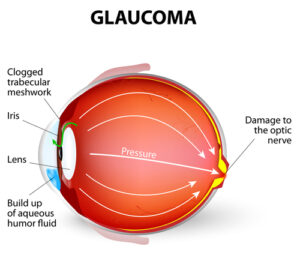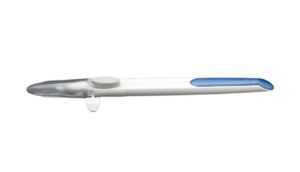Have you recently found out you have glaucoma? Glaucoma is a common age-related condition.
It’s also a serious eye condition. Often called the silent thief of sight, glaucoma is one of the leading causes of blindness in adults 60 and older.
Although it has no cure, you can manage glaucoma, especially if it’s diagnosed early. One of the newer ways to treat glaucoma that’s available is Durysta.
Durysta can prevent further damage from glaucoma and is a great alternative to traditional glaucoma medications. To understand what Durysta is and how it works, though, you need to talk about what glaucoma is and what causes it.
Keep reading to learn more about Durysta and how it can help glaucoma patients!
What is Glaucoma?

Glaucoma is the name given to a series of eye conditions that damage the optic nerve. The optic nerve is what connects your eye to your brain.
It sends along necessary information about what you see and translates signals into images. When damaged, the optic nerve can’t send complete information.
Patients with unmanaged glaucoma experience gradual vision loss, beginning with their peripheral vision. The more damage is done to the optic nerve, the more the vision tunnels and is impacted.
Glaucoma is called the silent thief of sight because it doesn’t present any symptoms in the early stages. Once symptoms do appear, they are irreversible.
Damage to the optic nerve is permanent and cannot be repaired. This is why it’s important to have regular eye exams. As you get older, this becomes even more crucial as you become more likely to develop age-related eye conditions.
Even if you don’t have symptoms, your eye doctor can find early signs of glaucoma by performing an eye exam. Most forms of glaucoma are caused by high intraocular pressure or IOP.
When the fluid that flows through your eye, called the aqueous humor, becomes blocked, pressure builds up. This pressure can then damage the optic nerve.
Open-angle Glaucoma
The most common form of glaucoma is called open-angle glaucoma. Open-angle glaucoma occurs when the trabecular meshwork becomes blocked.
The trabecular meshwork is the porous tissue that surrounds your eye. If it develops some sort of block, it causes pressure to build slowly over time.
When diagnosed, however, pressure can be reduced to prevent or slow further damage to the optic nerve.
Traditional Methods of Treating Glaucoma

Traditional treatments for open-angle glaucoma include medication along with a variety of procedures. The main treatment, especially when diagnosed in the early stages, is using medicated eye drops.
These eye drops help lower intraocular pressure. Patients may be prescribed these eye drops even if they only have elevated IOP levels and don’t officially have glaucoma yet. In such cases, these eye drops may prevent the patient from developing glaucoma for a long time.
One of the drawbacks of using eye drops is the need to take them every day. Glaucoma patients may struggle to take them, knowing they are necessary for the rest of their life.
High IOP may be eased by surgical intervention. Even then, patients often still require eye drops to keep their intraocular levels managed and under control.
Taking these eye drops is vital to preventing vision loss, but it can be frustrating to have to take them every single day. But for some patients, this is where a revolutionary treatment called Durysta comes in.
What is Durysta?

Durysta is an alternative for patients with open-angle glaucoma and patients with high IOP. These patients may have trouble remembering to take their eye drops or struggle to administer them.
Durysta is what’s called a sustained-release implant. A sustained release implant means it’s a very small device placed in the eye containing a medication dispersed slowly over time.
This medication, much like traditional eye drops for glaucoma, lowers IOP. Because the device administers the medication slowly over time, you don’t need to remember to use it every day. The medication will simply disperse automatically until the implant dissolves.
How Does Durysta Work?
Dursysta contains a chemical called bimatoprost. The implant delivers bimatoprost to the tissue surrounding your eye.
This tissue includes the trabecular meshwork, which is the channel that’s primarily blocked off in patients with open-angle glaucoma.
Bimatoprost increases the flow of fluids through the trabecular meshwork and helps to lower intraocular pressure levels in patients with glaucoma. The implant breaks down and dissolves after 4-5 months.
During that time, many glaucoma patients no longer need to take eye drops to lower their intraocular pressure, especially if they have glaucoma in the earliest stages. However, you can only have one treatment per eye currently.
The FDA has only approved Durysta as a one-time treatment. It may be available for further treatments pending further approval in the future.
That approval may come in the near future, so it’s possible you may be able to receive more than one Durysta implant in the years to come.
Should I Use Durysta?

If you have open-angle glaucoma, high intraocular pressure levels, or suffer from high blood pressure, you may benefit from Durysta. Durysta is meant for patients who struggle to take or remember to take eye drops.
It’s also excellent for anyone with open-angle glaucoma who doesn’t want to deal with taking eye drops every day. The only way to know for sure if Durysta is right for you, though, is to talk to your eye doctor.
Would you like to learn more about Durysta and whether or not it’s right for you? Schedule an appointment today at Loden Vision Centers in Nashville, TN!
Our specialists can help determine your eligibility and even prescribe Durysta if you’re approved for treatment.


